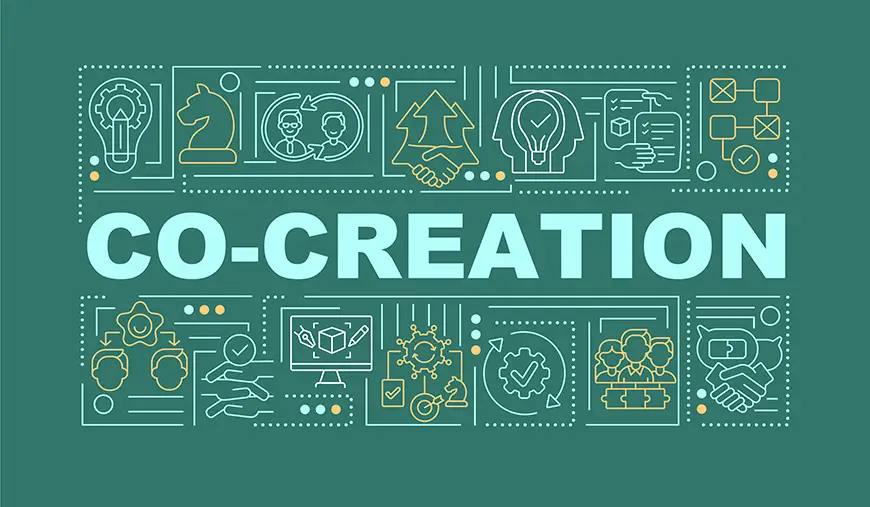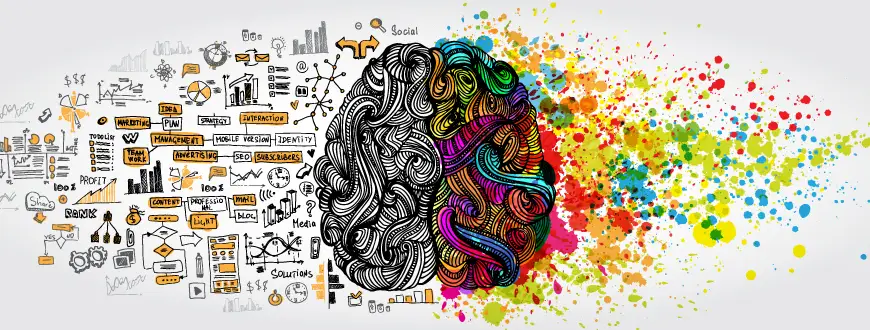Business•January 30, 2024
Co-Creation: The Proven Path to Skyrocketing Brand Loyalty

Make a difference in the business world by welcoming co-creation to enrich the company ideation process
What is the meaning of co-creation?
Co-creation represents a transformative approach to traditional business models. It is rooted in the principle of collaborative effort, where organizations work hand-in-hand with stakeholders, predominantly customers and employees, to ideate, design, and bring new products or services to life. This departure from conventional top-down strategies to a more inclusive method underscores a profound evolution in how businesses view their market relationships.
Historically, product development and service conceptualization were predominantly orchestrated behind the closed doors of research and development departments. However, co-creation breaks these barriers, inviting external contributors as spectators and active participants.
This means businesses are opening up platforms for their customers, employees, and sometimes even supply chain partners to submit ideas, feedback, and insights, ensuring the final product or service resonates more deeply with the end-users' needs and desires.
According to an article in the Harvard Business Review, in our contemporary digital landscape, where communication channels have diversified and accessibility to brands has increased manifold via platforms like social media, co-creation is rapidly becoming a critical component for sustainable business growth.
Customers today, equipped with many digital tools, have transformed from mere consumers to vocal advocates, or critics, of brands, making their involvement in the creation strategy not only valuable but imperative.
Furthermore, co-creation also reflects the power shift in the business-consumer dynamics. Today's consumers are well-informed, tech-savvy, and desire authentic experiences. They no longer wish to be passive recipients in the brand story; they want to be co-authors. Co-creation allows businesses to build a symbiotic relationship with their audience, fostering more profound engagement, trust, and loyalty.
Why do we use co-creation?
Enhanced product and service relevance
Co-creation ensures that products and services are crafted with direct inputs from the end-users—the customers themselves. As a result, the offerings are better aligned with the actual needs and preferences of the market. With co-creation, businesses can sidestep the costly misstep of introducing a product that is out of sync with customer desires because this collaborative approach results in solutions that not only meet but often exceed customer expectations.
Accelerated time-to-market
By involving customers and employees early in the product development and creation process, many potential roadblocks can be identified and addressed upfront. This proactive approach reduces the iteration cycles typically seen in traditional research and development processes. It speeds up the time it takes to launch a product or service to the market.
Strengthened brand loyalty
Co-creation fosters a sense of ownership among customers. When customers see their ideas come to life, it cultivates a deeper connection to the brand, increasing brand loyalty. It is not merely about customer satisfaction but about making customers stakeholders in the brand's journey.
Augmented innovation
Inviting diverse perspectives, experiences, and skill sets into the creation process inherently results in a broader range of ideas and solutions. This diversity fuels innovation, helping companies continually evolve and stay ahead of the competition.
Cost-efficient feedback mechanism
Traditionally, feedback was solicited after product launches, often leading to expensive recalibrations. Co-creation, however, allows for real-time feedback during the development process. This not only reduces post-launch modifications but also ensures resource optimization.
Enhanced customer relationships
Engaging customers in the co-creation process strengthens their relationships with the brand because the ongoing dialogue makes customers feel valued, listened to, and integral to the brand's success story.
Risk mitigation
By involving the end-users in the creation process, companies can identify potential issues or market misalignments early on. This proactive product or service development approach can mitigate risks associated with market rejection or unanticipated challenges.
What are the types of co-creation?
Idea generation
This type of co-creation involves customers, employees, and other stakeholders submitting ideas for new products, services, or process improvements. Often facilitated through platforms like social media or dedicated portals, it harnesses the collective intelligence of a vast and diverse audience that can lead to breakthrough innovations that might not emerge from traditional R&D approaches.
Concept development
Here, stakeholders collaborate with companies in fleshing out initial ideas into more tangible concepts. This can involve elaborating on features, design elements, or user experiences. These refined concepts then provide a more precise direction for product or service development.
Product development and design
Co-creation at this stage is more intensive, requiring participants to engage deeply with the development process. It might entail prototype testing, design feedback, or feature prioritization. Customers become co-designers, ensuring the final product resonates with their preferences and needs.
Market strategy co-creation
Instead of limiting co-creation to product development, companies can extend it to their market strategies. This approach invites stakeholders to contribute to marketing campaigns, branding initiatives, and even distribution strategies, ensuring the brand narrative is authentic and resonates deeply with the target audience.
Post-launch product enhancement
After launching a product or service, co-creation should not cease; it should be a long-term practice. Successful companies can continue encouraging customer participation to gather feedback for iterative improvements, enhancing features based on real-world use cases and experiences.
Supply chain co-creation
It involves collaborating with suppliers, distributors, and other partners in the supply chain. Such collaborations can lead to process optimizations, cost efficiencies, and more responsive supply chain mechanisms.
Platform-based co-creation
Companies can co-create value with users by leveraging digital platforms by offering tools, APIs, or platforms that allow customization, integration, or third-party development. This model is evident in tech sectors, where companies like Apple and Google have reaped immense benefits from allowing developers to co-create applications on their platforms.
Service experience co-creation
In service-oriented sectors, co-creation often revolves around enhancing the customer experience. Companies can offer more personalized, efficient, and delightful service experiences by involving customers in designing service touchpoints.
Conclusion

Depiction of the brain split into two parts, the logical part and the creative one
Co-creation is a forward-thinking approach that aligns customer participation, innovation, and collaborative spirit, offering companies a unique chance to bridge gaps, foster loyalty, and ensure relevance in an ever-evolving market. However, mastering co-creation requires more than just enthusiasm. It necessitates a profound understanding of modern business strategies, collaborative techniques, and consumer behavior.
Meridian University's MBA in Creative Enterprise is designed to give students the tools, perspectives, and insights needed to become leaders in the business world. The program does not just impart knowledge but fosters a mindset, preparing future leaders to embrace innovation, value every stakeholder, and make informed decisions in a dynamic business landscape.
If you are keen on embarking on this transformative journey, consider speaking with an Admission Advisor to learn more about our programs.
References
Ramaswamy, V. & Gouillart, F. (2010). Building the co-creative enterprise. Retrieved from https://hbr.org/2010/10/building-the-co-creative-enterprise
Prahalad, C. K., & Ramaswamy, V. (2004). Co-creation experiences: The next practice in value creation. Journal of Interactive Marketing, 18(3), 5-14.
Füller, J. (2010). Refining virtual co-creation from a consumer perspective.
California Management Review, 52(2), 98-122.
Learn More
Interested in learning more about the programs at Meridian?
Contact An Advisor »Attend an Info Session »



Submitting
Stay Inspired
Receive exclusive content on personal and professional transformation via email with expert insights in psychology, leadership, education, and more.
We don’t email frequently and you can always unsubscribe. By continuing, you are agreeing to Meridian’s Privacy Policy.